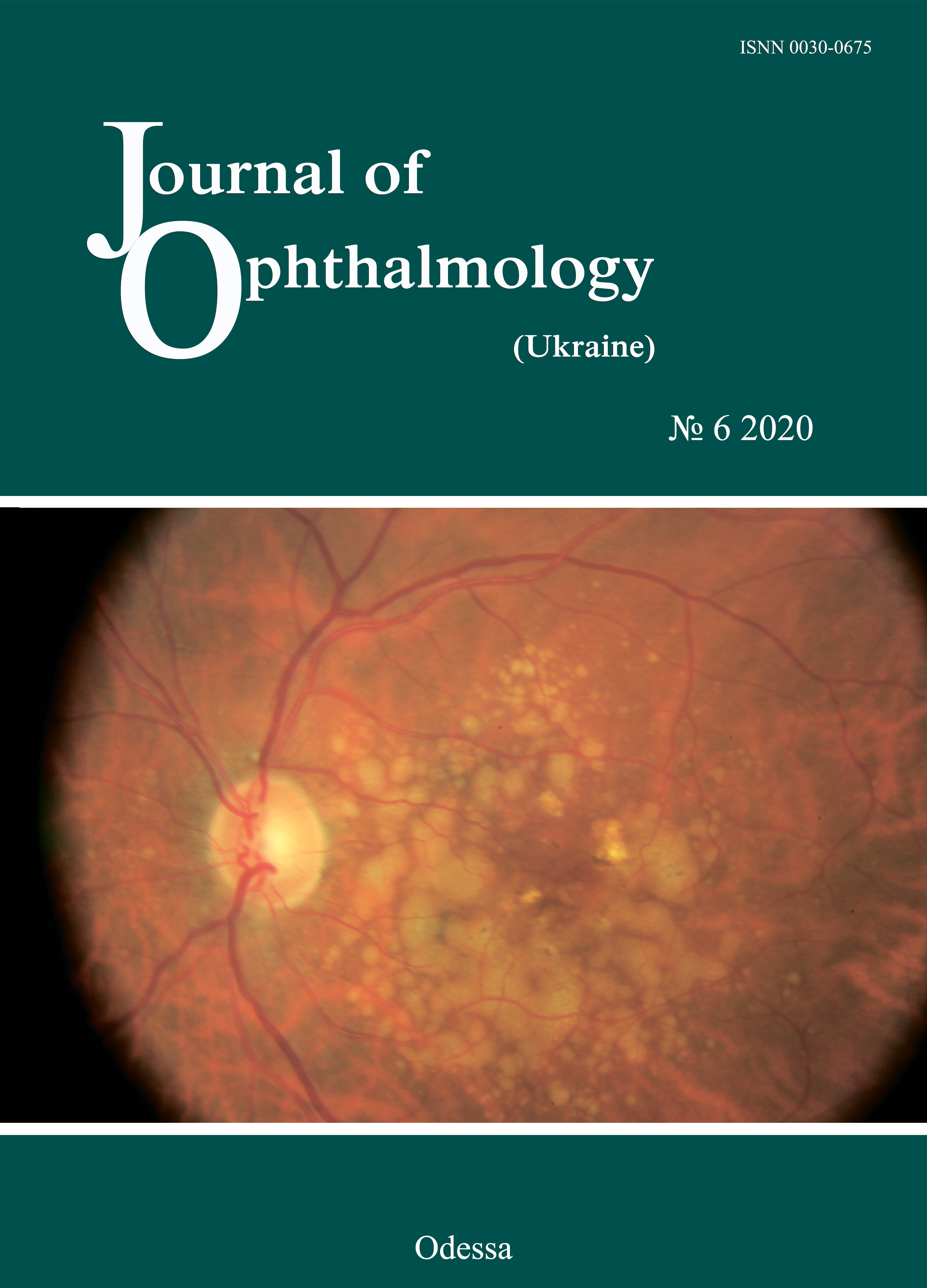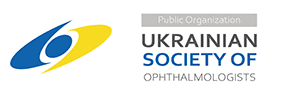A case of radiation cataract found 29 years after radiation exposure
DOI:
https://doi.org/10.31288/oftalmolzh202066163Keywords:
cataract, radiation cataract, ionizing radiation, Chornobyl acciddent, latent periodAbstract
Background: Radiation cataracts are an acknowledged biological effect of radiation exposure. It has been demonstrated previously that, the mode value for the latent period for the identified post-Chornobyl cases of radiation cataract was 9 years. We present a case of radiation cataract with typical clinical features that manifested 29 years after radiation exposure.
Material and Methods: A female patient, born in 1937, worked in the exclusion zone of the Chornobyl Nuclear Power Plant in early May of 1986; she is now under our regular supervision. Because over years, the patient had had the annual routine eye examination (including, but not limited to biomicroscopy, lens examination and red reflex photography using a fundus camera), the time of onset of specific lens opacity could be placed within a period of several months.
Results: On examination performed on December 15, 2014, the right lens showed mild peripheral cortical opacity without signs of radiation cataract, and with vacuoli seen in the anterior subcapsular lens region. On examination performed on August 8, 2015, the right eye showed a mild, specific, posterior, central subcapsular opacification.
Conclusion: We presented a case of radiation cataract, documented by fundus camera photography, with typical clinical features that manifested 29 years after radiation exposure. Detecting a radiation cataract so late after radiation exposure indicates that the changes in the eye exposed to radiation can be very durable.
References
1.Pasechnikova NV, Fedirko PA. Radiation cataract: new data received after Chornobyl accident. In: Proceedings of the International conference "Health effects of the Chornobyl accident - 30 years aftermath". April 18-19, 2016. Kyiv, 2016. p.113.
2.Worgul BV, Medvedovsky C, Wu B. Use of non-subjective analysis of lens transparency in experimental radiation cataract research. Ophthalmic Res. 1995;27 Suppl 1:110-5. https://doi.org/10.1159/000267855
3.Fedirko PA. [Radiation cataract as a late effect of the Chornobyl disaster]. Visnyk naukovykh doslidzhen. 2002;2:46-8. Ukrainian.
4.Fedirko PA, Babenko TF, Kolosynska OO, et al. Clinical types of cataracts in a long-term period after acute radiation sickness. Probl Radiac Med Radiobiol. 2019 Dec;24:493-502.https://doi.org/10.33145/2304-8336-2019-24-493-502
5.Zhou DD, Yao L, Guo KM, Lu CW. Cytogenetic evaluation of cataract patients occupationally exposed to ionizing radiation in northeast China. Genet Mol Res. 2016 Sep 16;15(3).https://doi.org/10.4238/gmr.15038687
6.Korol AR, Zadorozhnyy OS, Naumenko VO, Kustryn TB, Pasyechnikova N.V. Intravitreal aflibercept for the treatment of choroidal neovascularization associated with pathologic myopia: A pilot study. Clin Ophthalmol. 2016 Nov 4;10:2223-2229.https://doi.org/10.2147/OPTH.S117791
7.Korol A, Kustryn T, Zadorozhnyy O, Pasyechnikova N., Kozak I. Comparison of efficacy of intravitreal ranibizumab and aflibercept in eyes with myopic choroidal neovascularization: 24-month follow-up. J Ocul Pharmacol Ther. 2020 Mar;36(2):122-125.https://doi.org/10.1089/jop.2019.0080
8.Babenko TF, Fedirko PA, Dorichevska RY, Denysenko NV, Samoteikina LA, Tyshchenko OP. The risk of macular degeneration development in persons antenatally irradiated as a result of Chornobyl NPP accident. Probl Radiac Med Radiobiol. 2016 Dec;21:172-7.https://doi.org/10.33145/2304-8336-2016-21-172-177
9.Yao X, Zhai M, Zhou L, Yang L. Protective effects of SND1 in retinal photoreceptor cell damage induced by ionizing radiation. Biochem Biophys Res Commun. 2019 Jun 30;514(3):919-925.https://doi.org/10.1016/j.bbrc.2019.04.189
10.Mao XW, Boerma M, Rodriguez D, et al. Acute Effect of Low-Dose Space Radiation on Mouse Retina and Retinal Endothelial Cells. Radiat Res. 2018 Jul;190(1):45-52.https://doi.org/10.1667/RR14977.1
11.Vasylenko VV, Nechaev SY, Tsigankov MYa, et al. Results of comprehensive radiological - hygienic monitoring in some settlements of radiologically contaminated areas in Rivne region in 2017. Probl Radiac Med Radiobiol. 2018 Dec;23:139-152.https://doi.org/10.33145/2304-8336-2018-23-139-152
12.Vasylenko VV, Tsigankov MYa, Nechaev SYa, et al. Peculiarities of internal radiation doses due to 137Cs and 90Sr intake in population from Zhytomyr oblast in a late period after the Chornobyl NPP accident et al. Probl Radiac Med Radiobiol. 2013;(18):59-69.
13.Prylypko VA, Morozova MM, Petrychenko OO, Ozerova YY, Kotsubinskij OV. Morbidity rates in the NPP surveillance zone and radiologically contaminated areas. Probl Radiac Med Radiobiol. 2018 Dec;23:188-199.https://doi.org/10.33145/2304-8336-2018-23-188-199
14.Gunko NV, Korotkova NV. Variability of population gender and age composition in areas with the most intensive radiological contamination in Ukraine. Probl Radiac Med Radiobiol. 2018 Dec;23:153-163.https://doi.org/10.33145/2304-8336-2018-23-153-163
Downloads
Published
How to Cite
Issue
Section
License
Copyright (c) 2025 Н. В. Пасєчнікова, П. А. Федірко, Т. Ф. Бабенко

This work is licensed under a Creative Commons Attribution 4.0 International License.
This work is licensed under a Creative Commons Attribution 4.0 International (CC BY 4.0) that allows users to read, download, copy, distribute, print, search, or link to the full texts of the articles, or use them for any other lawful purpose, without asking prior permission from the publisher or the author as long as they cite the source.
COPYRIGHT NOTICE
Authors who publish in this journal agree to the following terms:
- Authors hold copyright immediately after publication of their works and retain publishing rights without any restrictions.
- The copyright commencement date complies the publication date of the issue, where the article is included in.
DEPOSIT POLICY
- Authors are permitted and encouraged to post their work online (e.g., in institutional repositories or on their website) during the editorial process, as it can lead to productive exchanges, as well as earlier and greater citation of published work.
- Authors are able to enter into separate, additional contractual arrangements for the non-exclusive distribution of the journal's published version of the work with an acknowledgement of its initial publication in this journal.
- Post-print (post-refereeing manuscript version) and publisher's PDF-version self-archiving is allowed.
- Archiving the pre-print (pre-refereeing manuscript version) not allowed.












